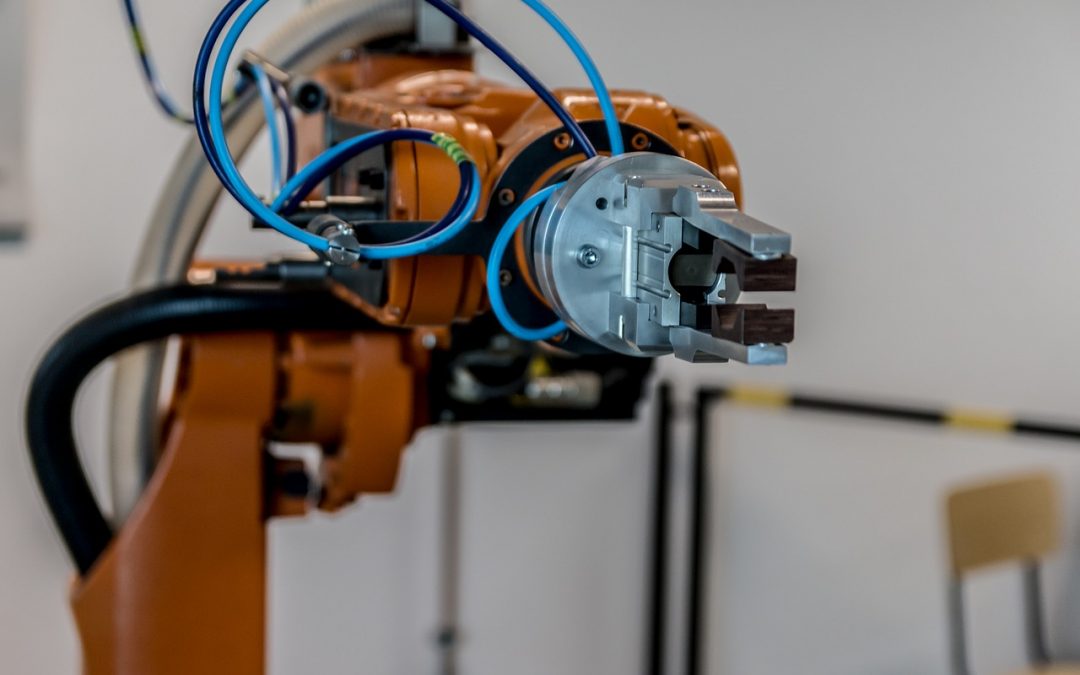The word “robot” was first used 100 years ago during a science fiction theater play premiered in 1921. A century later, robotics has long ceased to be a futuristic idea and it’s already part of our present. From domestic robotics to industrial robotics, the use of robots in our daily lives makes our tasks easier both at home and at work. Thus, many people appreciate it when their roomba vacuums the entire house or when the kitchen robot helps them making dinner, but the truth is that the use of robots goes much further and has meant huge progress in important fields such as medicine, education, physics or chemistry. Let’s take a look at some of them:
Domestic use
More and more people are relying on domestic robots to perform household chores. Some of the most popular are robot vacuum cleaners and kitchen robots, but nowadays we also have robots which are used to cut the lawn in the garden or clean the bottom of the pool, robots which clean our windows or which can even iron our clothes, although the latter are still very expensive and take up a lot of space. In addition, robotics has also allowed home automation (heating, lights, blinds or security systems).
Industry
Another common use of robotics is that of industrial processes, especially in the automotive industry and other assemblies by parts. In this case, industrial robots can move large boxes and pieces. They can also modify these pieces through actions such as assembling and disassembling them, welding or melting them, among others. Industrial robots can place batteries and connect them, package products and label them, carry out recycling processes, etc. Robotics can do all this in a faster and more precise way than humans, but above all in a safer way, since the weight of some parts can cause falls and serious work accidents. Thus, robots keep the physical part of the processes, while humans take care of their supervision.
Medicine
Robots are a great complement for health professionals, both in diagnostic tasks and in treatment, rehabilitation or helping people. There are robots which are very fast when making diagnoses, since they are indeed very good when it comes to identifying patterns, collecting data and relate all information. There are also robots which can perform where a doctor’s hand might not be able to do so in such a precise way, which is why they are very useful during surgical interventions. And there are robots which help the elderly, people with reduced mobility or with special needs, as well as there are robotic arms or legs for those who have lost a limb. In short, the combination of robotics and medicine offers more and more possibilities chasing the same goal: to improve people’s lives and health.
Physics and Chemistry
In the field of Physics, robots have been essential to perform tasks which would have been not possible for a human being. We are mainly referring to space robots, which can live in space and transport objects used in space missions, monitor space stations or walk on the terrain and allow humans to explore these territories from a distance. In terms of Chemistry, the precision of robots has been key to the manufacture and packaging of chemicals requiring a high level of accuracy, which is complicated for humans. As an example, one of the tasks performed by robots in this field is the dissolution of samples, although it is a type of collaborative robot that requires a lot of supervision by specialized personnel, so these processes would not be possible either without human work.
Education
Finally, the use of robotics at school is increasingly widespread, since it is a resource that allows working in many areas (mathematics, natural science, social science, technology, arts…) in a fun and game-based way. Also, as the use of robots in class is related to project learning, children can also improve social skills such as teamwork. These projects also foster their imagination and creativity, force them to constantly strive and think, and improve the students’ confidence and self-esteem as they overcome new challenges.
Robots continue to evolve constantly and every day they are more prepared. Therefore, in addition to the most widespread uses that we have seen,there are many other fields which are already introducing robotics in small tasks or which have prototypes that still need development time, but in a few years will be used daily. One example is the agricultural sector, which already uses aerial robots that are capable of collecting useful information about the terrain and crops, but will soon also be able to use ground robots in the form of tractors to help increase the production level.
The common feature of all the uses of robotics is the simplification of tasks for human beings and the improvement of our daily life thanks to this technology. However, like any technological progress, the extended use of robots has both positive and negative aspects. For this reason, it is very important to learn to make a conscious and responsible use of robots, to think about their uses and understand their functioning, in addition to training from an ethical point of view allowing the positive coexistence of humans and robots.

